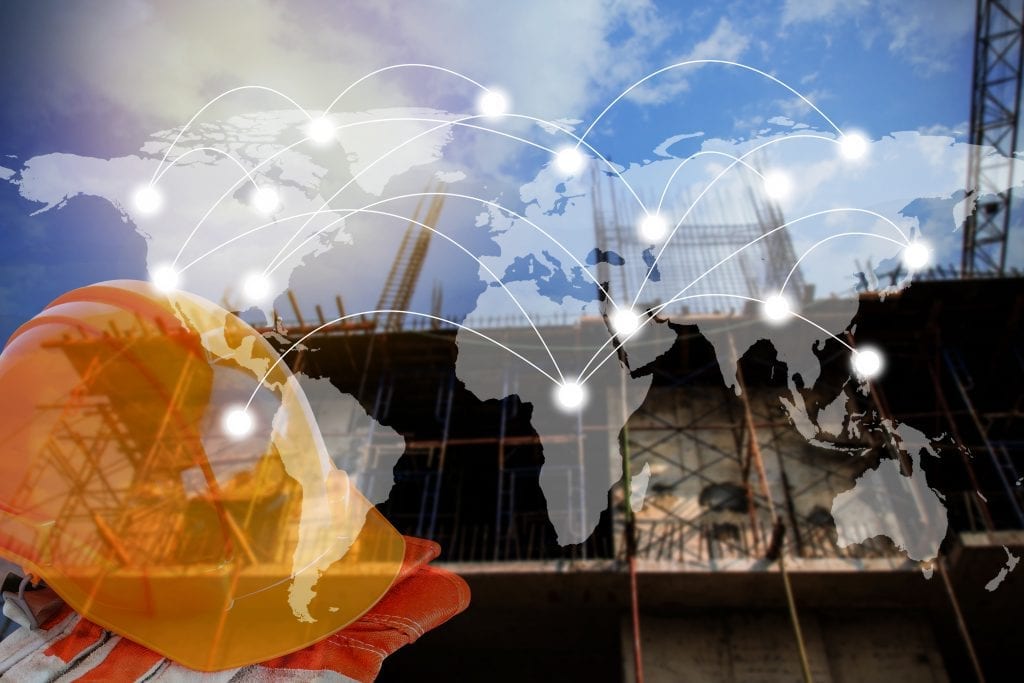Recently, the amount of hype surrounding Blockchain technology and cryptocurrencies has increased dramatically. Volatility in cryptocurrency, as seen with Bitcoin, has led to large price spikes and crashes. Startups are selling pieces of new digital coin-based schemes for large sums with little to show for the investments. The good news beyond the hype is that Blockchain offers great potential for material traceability and verification in the construction supply chain sector.
Intelliwave previously wrote an article about how SiteSense® uses secure blockchain technology combined with IoT devices, web and mobile software to improve construction project visibility. Simply put, blockchain technology is a way of storing and sharing information across a network of users in an open virtual space. Blockchain technology allows for users to look at all transactions simultaneously and in real-time. In construction, for example, a contractor would know with whom and when their material was handled, in addition to supplier quality and specification details. Additionally, since transactions are not stored in any single location, it is almost impossible to fake or alter the information.
For purchasing groups and construction contractors, blockchain technology can make a difference. By scanning a simple QR (Quick Response) barcode with a smartphone or tablet, data such as material serial number, photos and specifications or drawings, supply chain history, full quality documentation, and locations where material was stored is instantly available.
Reducing Misinformation
However, the information available is only as good as the data entered into the database, which may be incomplete or inaccurate as current practices in the construction industry are highly susceptible to human error. A majority of the source data is currently stored either on paper or in various disconnected databases or spreadsheets. These databases are highly vulnerable to informational inaccuracies, high operating costs, and in some cases intentional errors motivated by deception.
Blockchain operates independently and provides full traceability on the source of transactions which results in mistakes that are now traceable to individual culprits. Most importantly though, it facilitates data-sharing between stakeholders in a construction project. Many decisions on construction projects have been made using faulty information. With the use of blockchain, those mistakes could be greatly reduced.
Limits of Blockchain
Given its architecture, blockchain technology, like SiteSense®, offers an accessible and affordable solution to both small and medium-sized enterprises and large organizations. However, there are certain limitations.
Since all the information would be out there and accessible, several contracts between organizations would need to be secured for some level of confidentiality to be retained. How to balance confidentiality with transparency would need to be worked out. As well as utilizing a project based hierarchy that limits visibility of certain types of data to relevant stakeholders.
Public blockchain technology as it is currently being deployed would be problematic for many companies. From an outsider’s perspective blockchain seems to be just an elegant solution looking for a problem. In order to be effective, a blockchain solution needs to have buy in from all stakeholders on a project. Including agreeing to what types of data will be accessible and what the process will be for accessing and utilizing that information. For first time users of a technology like SiteSense®, this can be a hurdle to overcome, but subsequent projects become much easier, even when new stakeholders are involved.
Marketplace confusion limits participation
In addition, blockchain is still in its infancy for market adoption and most people are uncertain about its potential. The innovation in blockchain architectures, applications and business concepts is happening rapidly. It’s a decentralized, evolving technology which is challenging to implement for many projects.
In many industries, innovation is always desirable until it becomes real. Once it manifests itself, implementation challenges materialize. With any innovation, some organizations lead while others wait to see what happens. The existing blockchain environment is currently clouded with confusion due to the Bitcoin volatility, which is considered by many as being irrational and ridiculous.
Regardless, the most important challenge for blockchain technology remains full participation. All parties must adopt the technology for it to work. A successful integration of the blockchain requires the engagement of all participating organizations.
The good news for the construction industry is that practical applications of blockchain in construction are happening today. Contact Intelliwave for more information on improving the visibility and efficiency of your construction projects.
